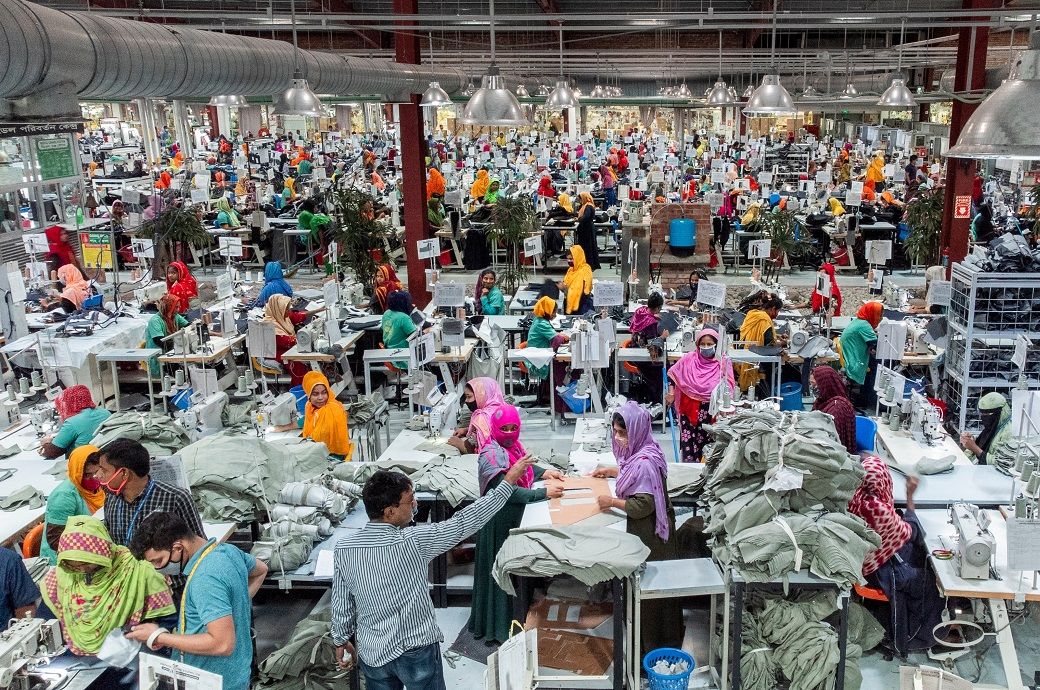
This sector contributes more than 80 per cent to Bangladesh’s total exports and represents a substantial share of the GDP. The RMG industry has been the driving force behind export-led growth, transforming Bangladesh into a global powerhouse in apparel manufacturing.
Bangladesh is the second-largest apparel manufacturer and exporter in the world, following China.
However, such an overwhelming reliance on a single sector carries substantial risks. The nation’s economic stability is exposed to the whims of the RMG market, and any downturn in the sector can have ripple effects throughout the economy.
As global competition intensifies and market conditions fluctuate, the need for diversification in Bangladesh’s export base has thus become more pressing to ensure long-term stability and resilience against global market volatility.
The ability to expand the export base beyond garments would mitigate risks and foster sustainable growth.
Recognising this need for diversification, Bangladesh has launched several initiatives aimed at broadening its export portfolio. One such notable effort is the Export Competitiveness for Jobs (EC4J) project, designed to enhance the country’s competitiveness in sectors like leather, footwear, light engineering, and plastics.
The project, initially approved in 2017, was funded by the World Bank with a budget of Taka 941 crore, reportedly, to create an estimated 90,000 new jobs. Its goal is to help Bangladesh tap into industries that could diversify its export basket and reduce reliance on the RMG sector.
However, the project is said to have encountered considerable delays, raising concerns about the pace of diversification endeavours.
Despite the initial optimism surrounding the EC4J project, the timeline for its completion has now been pushed back to June of the following year, as per reports. Although the project is around 70-78 per cent complete, progress has been stalled due to challenges in land acquisition and procurement of equipment needed for training.
However, this delay comes at a time when Bangladesh faces mounting pressure to expand its export base in preparation for the upcoming graduation from the Least Developed Country (LDC) group in November next year.
The graduation marks a critical milestone for the country, and the failure to diversify its exports could impede Bangladesh’s ability to compete in the global market post-graduation, according to experts.
Further, despite the project’s strategic objectives, export data suggests that Bangladesh’s efforts to diversify its exports have not yielded substantial results yet. For instance, in the fiscal year 2016-17, readymade garments reportedly accounted for 81.23 per cent of the country’s total exports, valued at $34.6 billion.
By fiscal year 2025, this share had increased to 81.49 per cent, according to reports, which cited data compiled by the Bangladesh Garment Manufacturers and Exporters Association (BGMEA), the apex garment makers’ body in the country.
Reports further added that the concentration of Bangladesh’s export markets also remains heavily skewed towards the European Union and the United States, with these two regions accounting for more than two-thirds of the total exports.
Despite years of policy discussions and business initiatives aimed at diversifying both export portfolio and markets, the country’s export landscape has not witnessed much change, and the slow pace of projects like the EC4J amidst the continuing dominance of the RMG sector in export statistics has only raised concerns among stakeholders.
While the project is seen as a crucial step toward diversifying the export portfolio, progress has been disappointingly slow.
As policymakers and business leaders continue to discuss the need for diversification, experts claim the current export model is no longer sustainable, and the country must accelerate its efforts to break free from its reliance on the garment industry if it is to maintain its growth trajectory in the days to come.
ALCHEMPro News Desk (DR)
Receive daily prices and market insights straight to your inbox. Subscribe to AlchemPro Weekly!